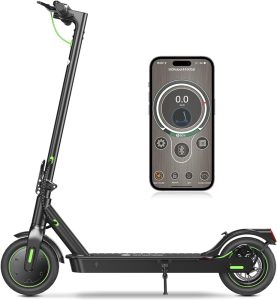Electric scooters, also known as e-scooters, have gained immense popularity in urban environments for their convenience and eco-friendliness. However, their integration into public transportation systems, like buses, raises several questions about policies, safety, and practicality.
Understanding Transportation Policies for E-Scooters
Regulations Vary by Location
The rules regarding the transportation of e-scooters on public buses vary significantly from one region to another. Generally, transit authorities set these regulations based on factors like scooter size, the bus's capacity, and safety considerations. It's crucial for riders to check local transit rules before planning their journey with an e-scooter.
Safety Requirements
Safety is a primary concern for transit authorities. E-scooters must be compact enough to safely fit within the bus without obstructing aisles or doors. Some buses may have designated areas for larger items, but space is often limited.
Practical Considerations
Size and Portability
E-scooters come in various sizes and designs. The portability of an e-scooter is a key factor in determining whether it can be brought on a bus. Smaller, foldable models are more likely to be accepted.
Impact on Other Passengers
Riders must consider the impact of their e-scooter on other passengers. E-scooters should not take up seating space or impede the movement within the bus.
E-Scooter Specifications
Understanding the technical aspects of e-scooters can help determine their compatibility with bus travel. Key specifications to consider include:
- Size and Dimensions: E-scooters should be compact for easy handling. Dimensions often vary, but a foldable design can significantly reduce the space needed.
- Weight: The weight of the e-scooter affects its portability. Lightweight models are preferable for bus travel.
- Battery Life and Power: The battery life determines how far the scooter can travel. Longer battery life is beneficial for commuters who combine bus and scooter travel.
- Speed and Performance: While speed is less relevant for bus travel, it's important for overall commuting efficiency.

Cost and Budget Considerations
Purchase Cost
The cost of an e-scooter can vary widely based on its features and quality. High-end models offer more power and durability but come at a higher price.
Maintenance and Lifespan
Maintenance costs and the lifespan of the e-scooter are important for long-term budgeting. Regular maintenance ensures safety and extends the scooter's usability.
Conclusion
To sum up, whether can you bring e scooter on bus depends on various factors including local transit policies, the scooter's size and design, and considerations for fellow passengers. Understanding these elements is key to a smooth and responsible integration of e-scooters into public transportation.
